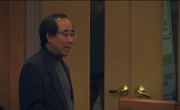현대인들은 수많은 풍경과 사람, 사물들 사이에 존재한다. 그리고 그들 중에 어떤 것은 보고 어떤 것은 보지 못한다. 또한 어떤 것은 만지고 어떤 것은 만지지 못한다. 우리가 무언가를 보거...
http://chineseinput.net/에서 pinyin(병음)방식으로 중국어를 변환할 수 있습니다.
변환된 중국어를 복사하여 사용하시면 됩니다.
- 中文 을 입력하시려면 zhongwen을 입력하시고 space를누르시면됩니다.
- 北京 을 입력하시려면 beijing을 입력하시고 space를 누르시면 됩니다.
부가정보
국문 초록 (Abstract)
현대인들은 수많은 풍경과 사람, 사물들 사이에 존재한다. 그리고 그들 중에 어떤 것은 보고 어떤 것은 보지 못한다. 또한 어떤 것은 만지고 어떤 것은 만지지 못한다. 우리가 무언가를 보거나 만지지 못하는것은 대상과의 물리적인 거리나 상황의 제약 때문일 수도 있고 또는 우리가 그것들에 관심을 갖지 않기 때문일 수도 있다. 이러한 관심은 의식과 관련이 있다. 연구자에겐 사물을 대할 때 어떤 사물은 살아있다고 느끼고 어떤 사물은 죽어있다고 느끼는 경우가 있다. 이러한 감상은 사물을 의인화하며 이루어지는 것이라고 생각하며 사물이 살아있음과 죽어있음은 곧 사물을 대하는 사람의 의식이 살아있거나 죽어있는 것을 의미하는 것 같다. 따라서 사물이 살아있다는 표현은, 사물을 인식하는 사람의 의식이 온전하게 살아있음을 의미하는 것이고 사물을 진정으로 안다는 것은 관심에서부터 출발한다고 생각하였다. 본고는 연구자가 도자 작업을 통해 위와 같은 의미로서 ‘살아있는 작품’을 제작하기 위해 필요한 선행연구로서 작성되었으며, 우리의 관심을 자극하고 의식을 일깨울 수 있는 사물은 어떻게 지각되고 존재해야 하는지에 관한 연구이다. 제 1장에서는 구체적이고 개인적인 경험을 토대로 한 연구의 배경 및 목적을 밝히고 본론에서는 의식과 지각의 구조를 현상학적으로 연구한 에드문트 훗설(Edmund Husserl,1859~1938)의 인식론을 살펴보면서 그의 관점에서 사물에 관한 온전한 인식이란 무엇인가, 그리고 어떻게 이루어지는 것인가에 대해 기술한다. 그리고 나아가 앞의 내용을 바탕으로 하여 사물 혹은 작품이 살아있기 위해서는 어떻게 존재해야 하고 제작되어야 하는지에 대해 인식론적 관점과 공예론적 관점을 융합해 탐구한다. 제 Ⅳ장은 본고를 맺으며 사물들 또는 작품들이 진정으로 살아있다는 것에 대한 의미를 새롭게 정의 내려 본다.
다국어 초록 (Multilingual Abstract)
We exist among countless landscapes, people, and objects. And see some of them and not some of them. Some things are touched and others are untouchable. The inability to see or touch something may be due to physical distance from the object or to rest...
We exist among countless landscapes, people, and objects. And see some of them and not some of them. Some things are touched and others are untouchable. The inability to see or touch something may be due to physical distance from the object or to restrictions in the circumstances, or because we are not interested in them. This interest is related to consciousness. Sometimes I feel that some things are alive and others are dead when dealing with them. This appreciation is thought to be made by personifying things, and the fact that things are alive and dead seems to mean that the person's consciousness toward them is alive or is dead. Therefore, I thought that the expression that an object is alive means that the consciousness of the person who recognizes it is alive and that knowing it truly starts with interest. This thesis is written as a prior study necessary for me to make 'living objects' in this sense through ceramic work, and is a study on how objects that can stimulate our interest and awaken our consciousness should be perceived and present. Chapter 1 identifies the background and purpose of the study based on specific and personal experience, and the main body examines the epistemology of Edmund Husserl(1859–1938), a phenomenological study of the structure of consciousness and perception, explaining what is and how it achieved in his perspective. Furthermore, based on the preceding content, we explore epistemological and crafts views on how objects or works should exist and be produced in order to be alive. In thesis, I redefine the meaning of objects or works that are truly alive.
목차 (Table of Contents)
- Ⅰ. 머리말
- Ⅱ. 인식론적 접근을 통한 살아있는 사물 제작 방법
- Ⅲ. 맺음말
- 참고문헌
- Abstract
- Ⅰ. 머리말
- Ⅱ. 인식론적 접근을 통한 살아있는 사물 제작 방법
- Ⅲ. 맺음말
- 참고문헌
- Abstract
동일학술지(권/호) 다른 논문
-
- 이화여자대학교 도예연구소
- 정호정
- 2021
-
- 이화여자대학교 도예연구소
- 조은미
- 2021
-
- 이화여자대학교 도예연구소
- 김예성
- 2021
-
- 이화여자대학교 도예연구소
- 김성윤
- 2021




 RISS
RISS KISS
KISS







